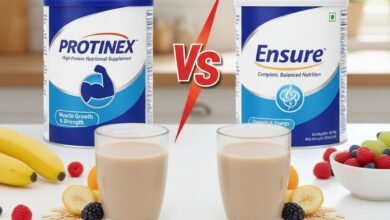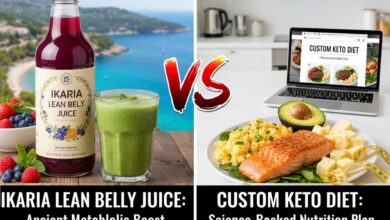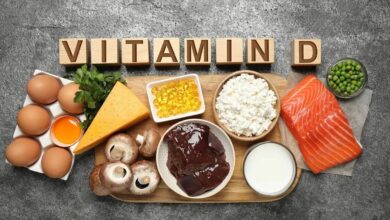Why Is Prime Hydration So Expensive 2025

Prime Hydration has exploded in popularity over the past year, quickly becoming one of the trendiest sports drinks on the market. However, many are wondering – why is Prime Hydration so expensive compared to other sports drinks? A case of 12 Prime bottles typically costs around $50, making each bottle over $4. That’s quite pricey when you can buy mainstream sports drinks like Gatorade for under $2 per bottle.
There are several key reasons why Prime manages to command such a high price point. Let’s analyze the main factors driving Prime’s premium pricing strategy.
The Fame Factor
First and foremost, Prime owes much of its success and identity to its celebrity creators – Logan Paul and KSI. Both are massive internet personalities and star boxers with millions of loyal followers. When they launched Prime last year, their fame brought instant attention and credibility to the previously unknown sports drink.
As Logan Paul stated in an interview, “We realized between the two of us we have one of the most valuable commodities in the world – an engaged audience.”
Prime Hydration sells not just as a sports drink, but as a lifestyle/merchandise brand tied to Logan and KSI’s over-the-top personalities. Their fans are willing to pay higher prices just to buy a product affiliated with them.
The cool, luxurious branding also attracts non-fans aspiring to feel part of that internet influencer lifestyle. So, name/brand recognition justified setting higher retail prices for Prime Hydration.
Read More: Dental Implant Grants in North Carolina
The Appeal of Exclusivity
When first launched in early 2022, Prime maintained a tight cap on production. This made the drink seem rare and exclusive, with bottles constantly selling out.
For over half a year, Prime Hydration had no official website for direct online sales. The only way to get it was to find it at select stores or pay marked-up prices from resellers.
This exclusivity tactic promoted Prime as a hot, must-have item and avoided oversaturating the market too early. Fans went crazy trying to get their hands on the scarce supplies, likely willing to pay inflated prices amidst the hype.
Even now with more widespread availability, Prime Hydration retains an aura of exclusivity and trendiness compared to mass market labels like Gatorade. Consumers pay extra to feel part of the “in” crowd.
The Power of Hype Marketing
Prime demonstrates expert leveraging of hype marketing and influencer promotions. Logan and KSI utilize their massive social media reach to drum up hype for product drops and new flavors.
Limited edition flavors in particular fetch extremely high resale values, playing into that exclusivity factor. For example, a 12-pack case of their limited-run Blue Raspberry Prime is currently priced at $345 on StockX!
This hype marketing successfully frames Prime as far more than just a functional beverage. It’s an exciting experience – every new drop, every limited batch, feels like a major event for fans.
That emotional engagement raises perceived value and justification for paying luxury brand-level pricing. After all, Supreme bricks cost a fortune, too!
High Ingredient/Production Standards
While clever marketing has hugely boosted its appeal, Prime does also boast an impressively high-quality nutritional formula, setting it apart from typical mass-market sports drinks.
Prime contains no artificial colors, flavors, or sugar substitutes. As noted on their website, its ingredients meet many organic certification standards. These include using non-GMO sources, real fruit juices for flavors, monk fruit for natural sweetening, premium electrolytes like coconut water powder, etc.
Such clean, natural formulas cost more to develop and source at scale than artificial lab chemicals used by bigger brands. Additionally, Prime manufactures primarily in the US, adhering to higher production standards versus outsourcing to the cheapest facilities overseas.
So while the marketing eye-catchingly boosts perceived value, Prime does genuinely contain better, more expensive ingredients than conventional mainstream sports drinks behind the scenes.
Savvy Leveraging of the Direct-to-Consumer Model
Initially, Prime maintained an air of scarcity, relying purely on retail distribution. But in oin2022, they invested heavily in indirect e-commerce, launching an official website for online orders.
This proved extremely lucrative, directly capturing consumers versus splitting profits with retail chains. As highlighted in the Forbes interview, Prime’s gross margins via DTC sales are a whopping 70%!
So by owning that distribution channel, they earn far more per sale, supporting higher pricing. Simultaneously, they still maintain a retail presence, playing into that exclusive hype. It’s quite a savvy formula!
Recouping Major Startup Costs
Launching a new beverage brand requires massive upfront investments – product R&D, establishing manufacturing/distribution channels, and marketing.
As revealed in a Yahoo Finance video, Logan and KSI poured around $15 million of their own money into Prime just to get it off the ground!
At this scaling growth stage, they’re focused on rapidly recouping those startup costs before selling equity to investors. Charging premium prices has helped accelerate the payback period to justify the initial financial risk they undertook.
Once they reached sufficient profitability, WatchGang raised $225 million in financing to value Prime at $1 BbillionSo the high valuation confirms investors feel the brand warrants luxury-tier pricing based on its early success metrics.
Does Prime Hydration Deserve Its High Prices?
After analyzing the key factors behind Prime’s pricing, do they justify charging 4X+ more than mainstream sports drinks? Or is Prime overpriced hype?
The short answer Pr Prime’s pricing accurately reflects its value. While the marketing creates tremendous perceived value beyond just being a sports drink, Prime delivers genuine quality to back up that premium branding.
The proof lies in its spectacular success despite the high cost. Consumers voluntarily choose to buy it at prices unmatched by big brands like Gatorade or Powerade. Prime’s niche is understanding a segment of consumers rewho late to internet influencer culture and crave being part of that world.
For Logan Paul and KSI super fans, or folks who buy into the hype marketing, Prime offers an emotional value and identity beyond basic hydration. Its actual production quality and ingredients also outclass most affordable mass market beverage brands, even if the average shopper can’t tell lab-made chemicals from organic compounds!
At the end of the day, consumers decide if a product warrants its price tag. The market resoundingly votes yes for Prime. As they expand distribution in 2023, Prime may adjust pricing lower to capture more mainstream buyers. But for now, their premium price point is entirely justified based on the stellar response.
Conclusion
Prime Hydration proves an extremely savvy new entry into the sports drink market. While its wild popularity stems partly from Logan Paul and KSI’s fame, clever hype marketing, and exclusivity tactics, Prime also delivers a genuinely quality formula.
Prime’s premium pricing accurately reflects both its production costs and the immense emotional value fans associate with the brand. Conventional sports drink companies could learn a lot from how masterfully Prime crafted an aspirational image that consumers far prefer (and pay more for!)
As they scale up in 2023 following their $1 billion valuation, Prime may expand its customer demographics by lowering prices at mass retail locations. But the core Prime brand will likely always command a luxury premium price point compared to older sports drink mainstays like Gatorade.
When people pay hundreds for limited edition Prime flavors, that suggests the Standard Edition at just $4 a bottle seems reasonable! Logan Paul and KSI knew exactly how to turn their online fame into a wildly successful physical product.
Frequently Asked Questions
Here are answers to some common questions about why Prime Hydration manages to charge so much:
Is Prime better than other sports drinks?
Yes, Prime does contain higher-quality ingredients than typical mass-market sports drinks. It uses no artificial colors/flavors/sweeteners and sources from organic suppliers. So while the hype hugely bolsters its branding, too, Prime delivers an actual performance edge over competitors.
Doesn’t Prime cost like $2 to make, though? How do they set such high prices?
The actual base ingredient/manufacturing cost is likely $2 or less per bottle. However, a huge range of extra expenses like R&D, celebrity sponsorships, distribution/logistics, marketing, etc. Contribute to overall business costs needing recoupment via sales. With clever DTC e-commerce profits, Prime rapidly earns enough to justify luxury brand pricing.
Can I make my own bootleg Prime at home for cheaper?
You can try to recreate Prime’s core electrolyte/hydration formula using basic supplements and ingredients. But you wouldn’t match the exact flavors or quality control. And of course, you’d lose the hype branding tied to Logan/KSI that fans are paying extra for!
Will Prime’s prices drop when the hype dies down?
Possibly, but Prime’s brand appeal seems durable beyond the temporary hype now that they’ve cemented an identity in the market. They may offer sales or value packs to expand affordability while keeping core pricing at a premium level that the market supports. Discounting too much could hurt perceived exclusivity.



